One of my favorite fish to target and eat off the pier is the Spanish Mackerel (Scomberomorous maculatus). They are a highly aggressive and fast species of mackerel, willing to hit pretty much anything shiny that you move through the water. Even to the point of eating swivels much to many anglers’ chagrin when a Spanish cuts the leader swivel off when fighting other fish. They often move in large schools letting anglers get a limit of them pretty quick on a good day. They can range in size from 10″ half-pound fish up to 3ft long and over 10 lbs. On the pier, a trophy Spanish is anything over 4 lbs, at which point they are called axe-handle Spanish. When it comes to the table generally people say they are good to eat, but still being a mackerel they do have a decent oil content in their meat. The meat has a nice pink color and when cooked lightly flaky with a great flavor, is best fresh but freezes all right compared to king mackerel. So I’m going to show yall how to clean a Spanish mackerel today and make it into a nice Spanish Mackerel Ceviche.
Cook your Catch on AllOutdoor
- Cook your Catch: Fried Shrimp and Shrimp Spiders
- Cook your Catch: King Mackerel Fish Dip – A Great Party Appetizer!
- Cook your Catch: Brown Butter Skate Wing with Parsnips
- Cook your Catch – Knobbed Porgy (Chinese Steamed Fish)
- Cook your Catch – Blackened Coosa River Striped Bass
- Cook your Catch – Whole Fried Dove from Public Land Hunting in Georgia
- Cook your Catch – Baked Garlic & Paprika Bluefish
- Cook your Catch – Vietnamese Ladyfish Cakes – Chả Cá
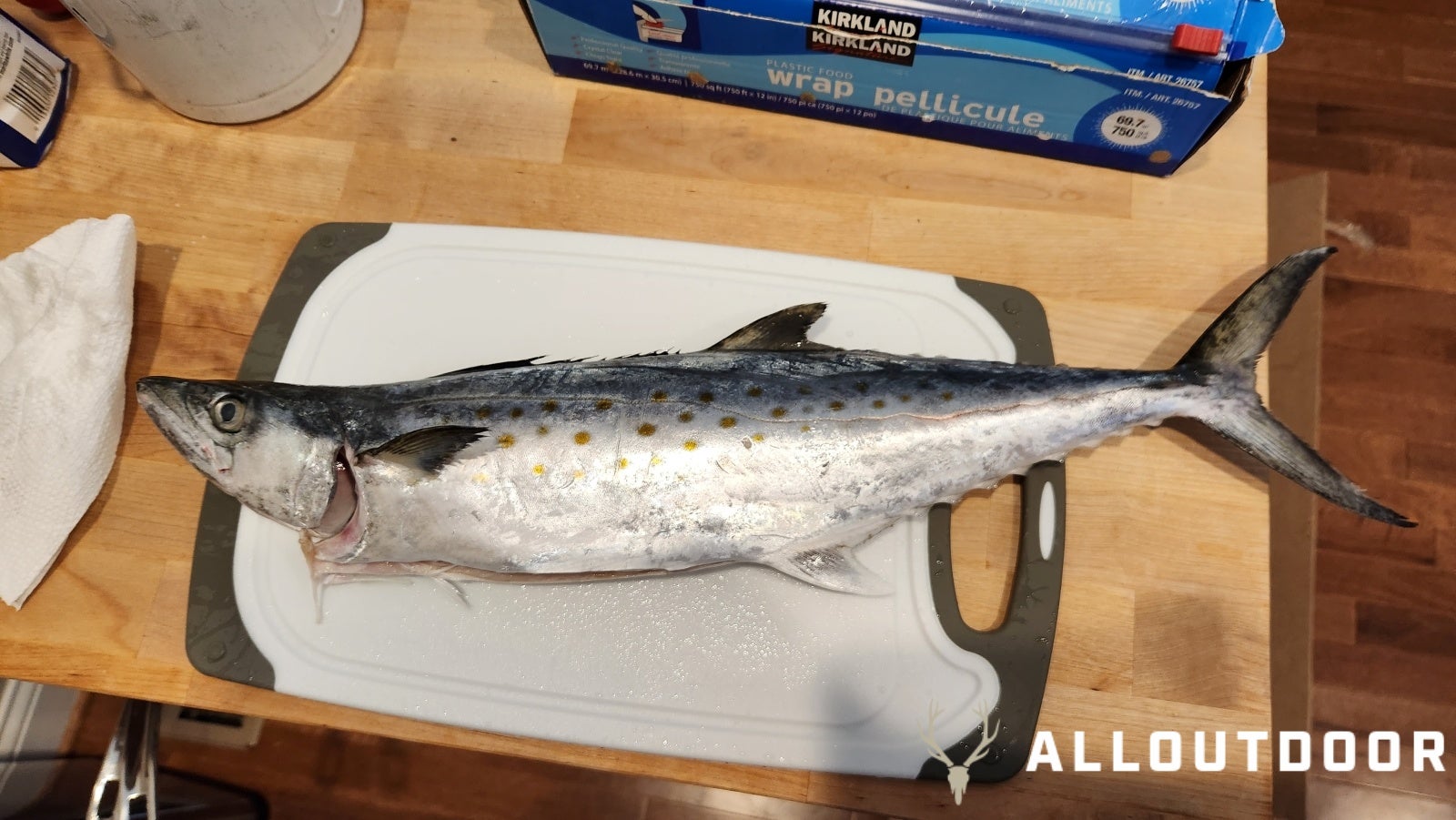
Ok starting off with a gutted and filled Spanish mackerel, with any of the mackerel species make sure to bleed and gut them as soon as possible for best meat quality. The mackerel has been scaled at the pier the scales are very small and come right off in your hands when you touch the fish, so I just hose them off when I gut them. I take my first usual step here by taking the head and collars off.
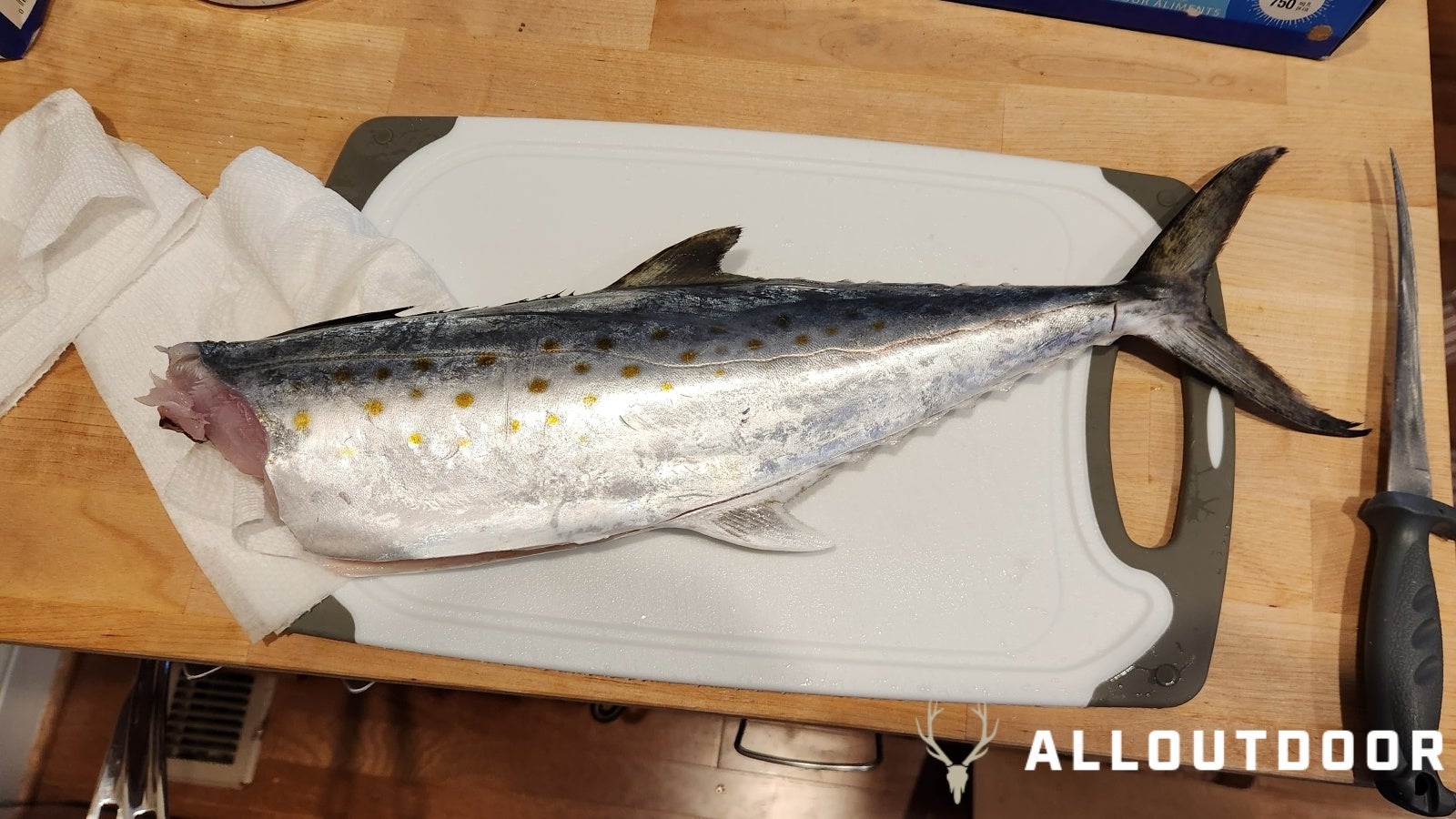
Then start the first fillet of Spanish mackerel by either tracing the back or belly right along the fins. With this fish, I chose to start at the belly side and push through the rib bones. Keep a relatively flat angle to stay close to the bones. Work along them in long smooth strokes till you hit the spine. Work the knife over the contour of the spine then continue on the other side.
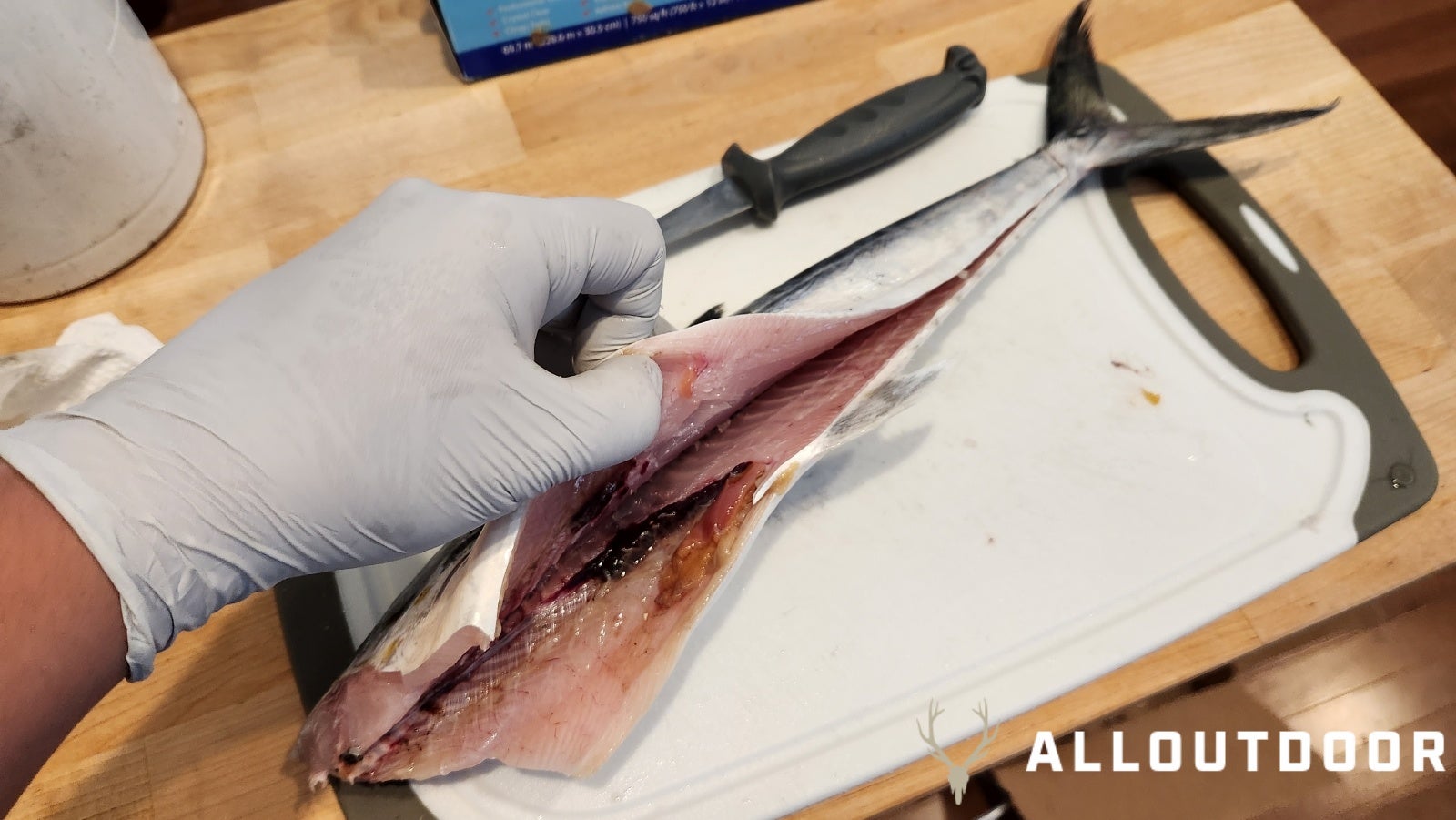
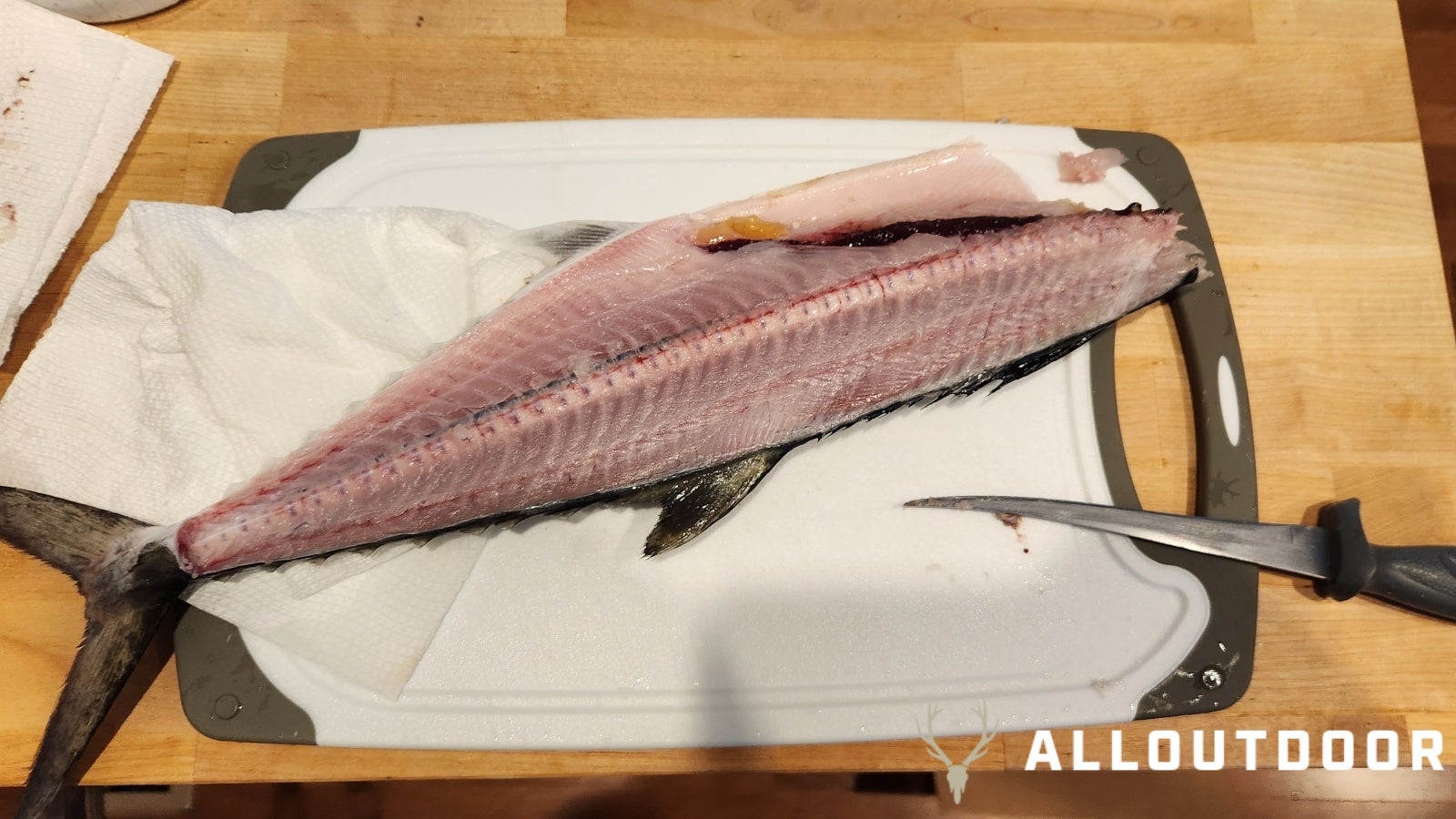
Once you take the first fillet of the Spanish, flip the mackerel over and fillet the other side following the steps as the first side.
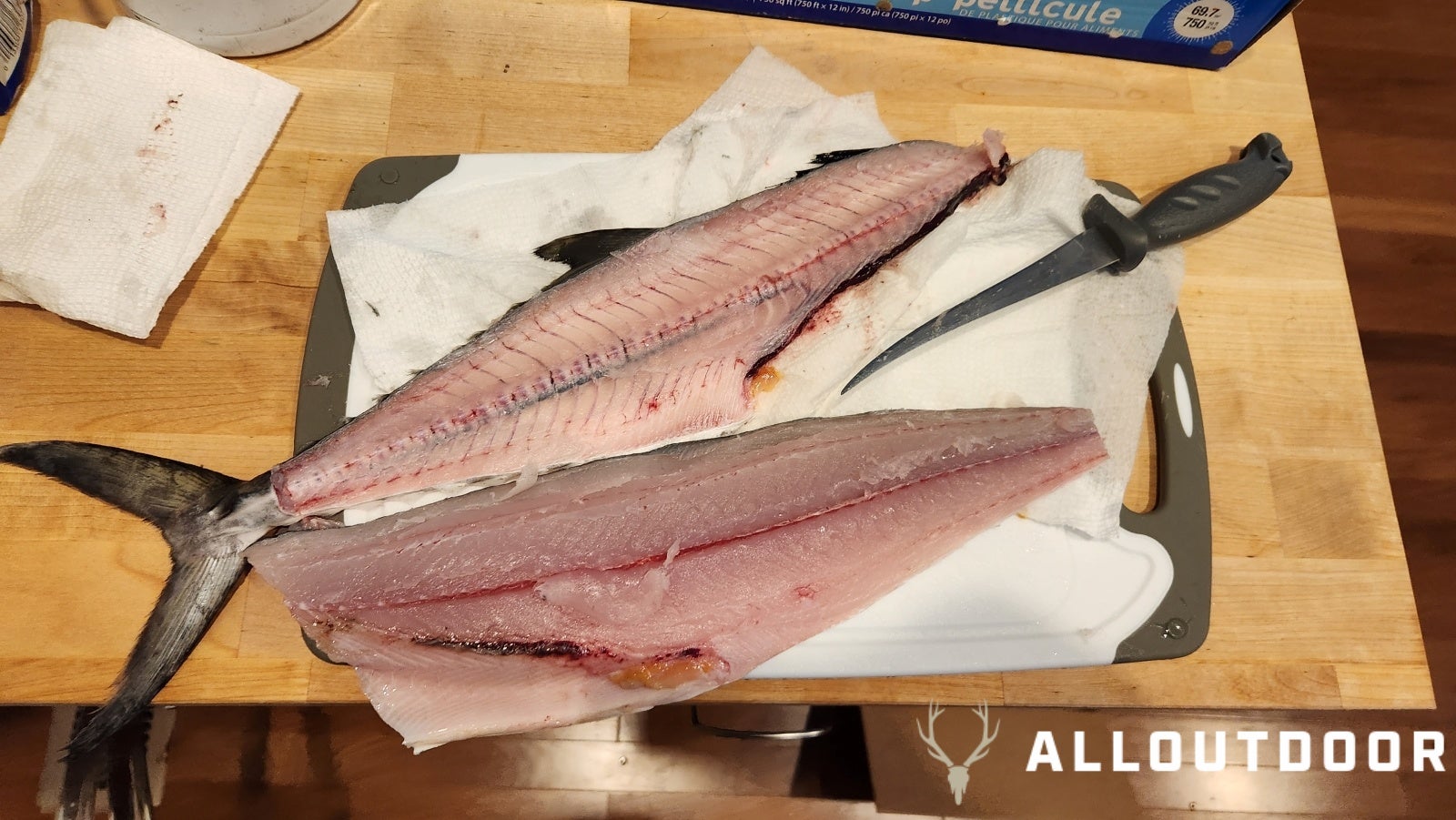
With both fillets off the frame of the Spanish mackerel, it is time to trim up the fillets. The first thing to do is trim off the ribcage. Run the knife at an angle along the rib bones to try and save as much meat as possible. Then score along the pin bones that are along the midline of the fillet. You want to cut down to the skin but not through the skin. Do this to both fillets.
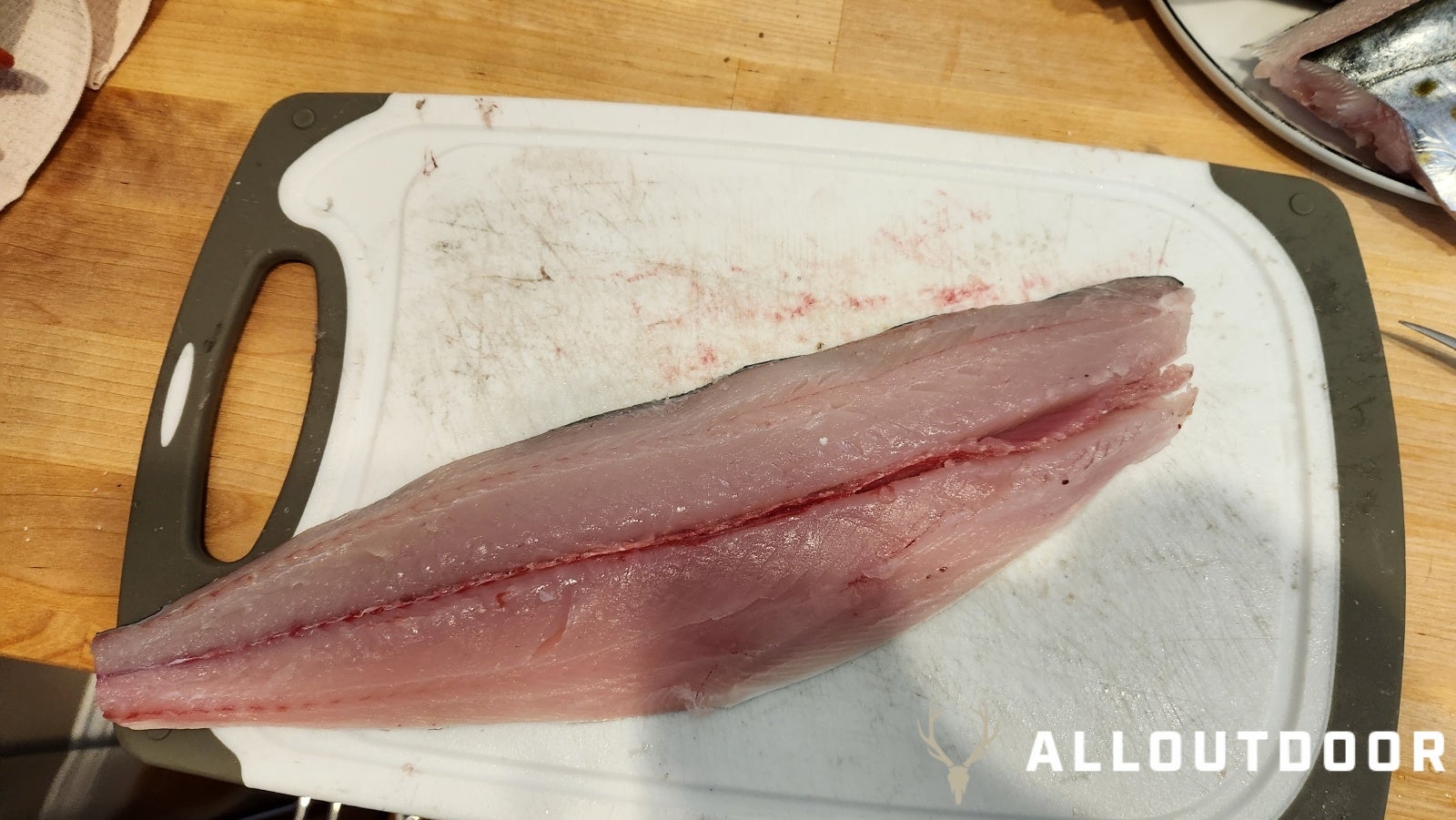
Now it is time to skin the fillets, start at the tail with your fillet knife and cut down to the skin. Flatten out the knife angle and push the knife in a smooth motion to remove the skin. You don’t want to saw the knife and you want to stay as flat as possible so you don’t accidentally cut through the skin. Once the skin is off remove the pin bones and your fillet is done.
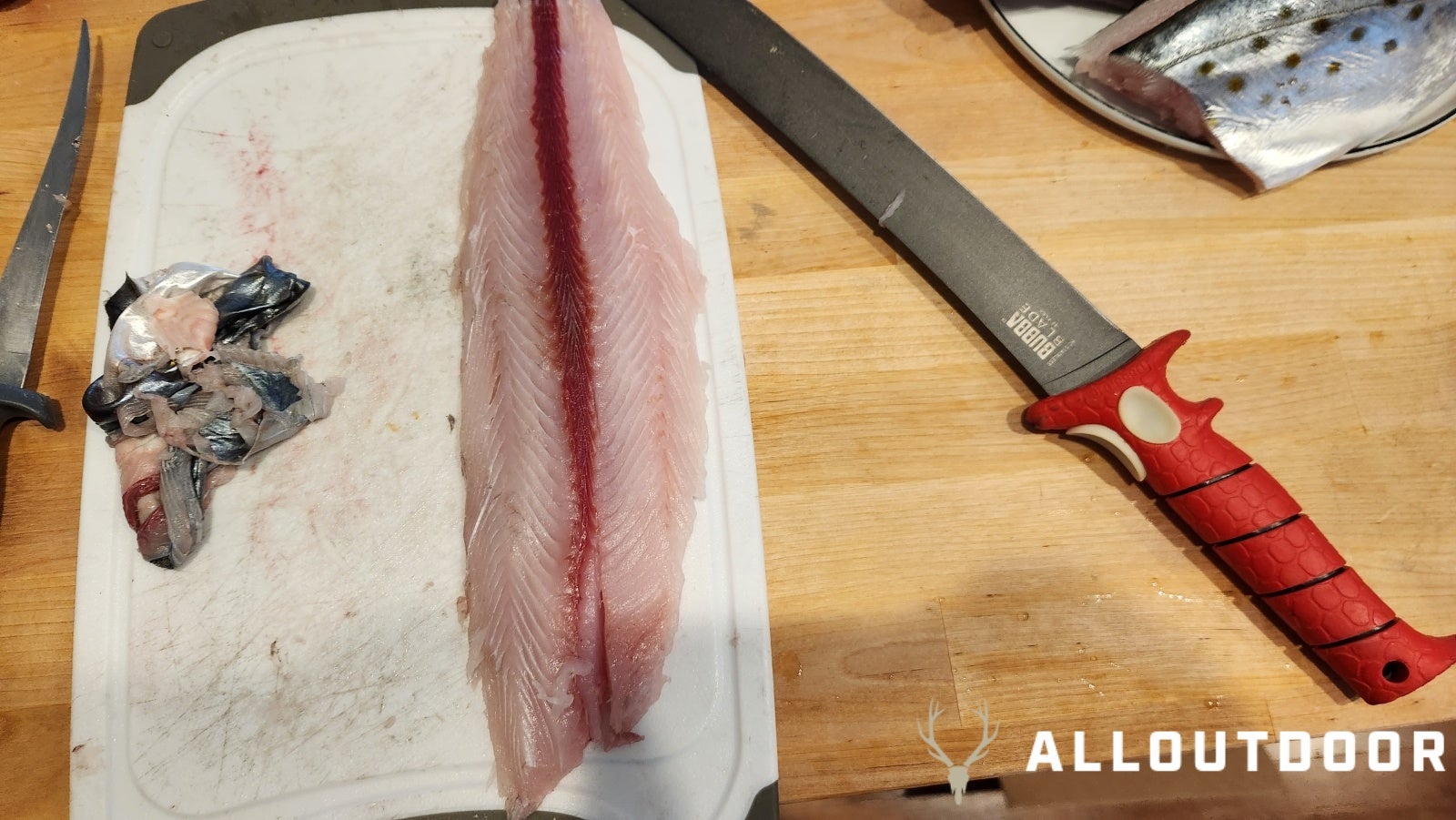
Cook your Catch – Spanish Mackerel Ceviche
Spanish Mackerel Ceviche Ingredients
- Boneless skinless Spanish Mackerel fillets
- Red Onion
- Limes
- Cilantro
- Tomato
- Serrano Pepper
- Salt and pepper to taste
- Tostadas and Valentina Hot Sauce to serve
Start off by thinly slicing the red onions and add them to a mixing bowl. I used half a red onion for 2 Spanish mackerel fillets. Then cube up the mackerel fillets into 1-inch cubes and add them to the mixing bowl as well.
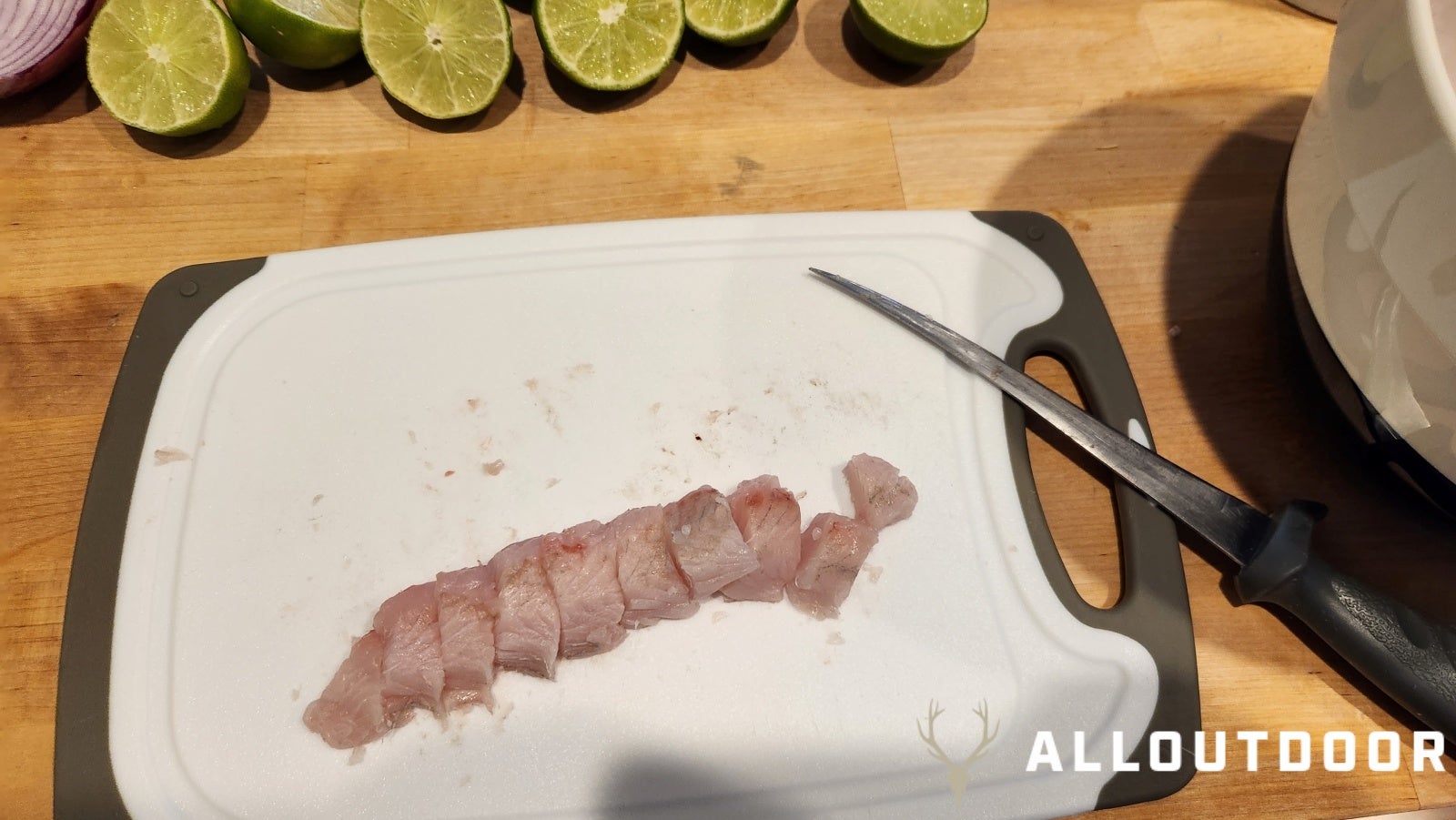
Season both the red onions and Spanish Mackerel cubes with some sea salt. Then squeeze 3 limes into the mixing bowl. Mix the lime juice, Spanish cubes, and onions till well combined making sure all the mackerel is covered in the lime juice. Then cover the bowl and put it in the fridge for 30 minutes as it turns color. The acidity of the lime juice will “cook” the fish, changing it’s texture and color.
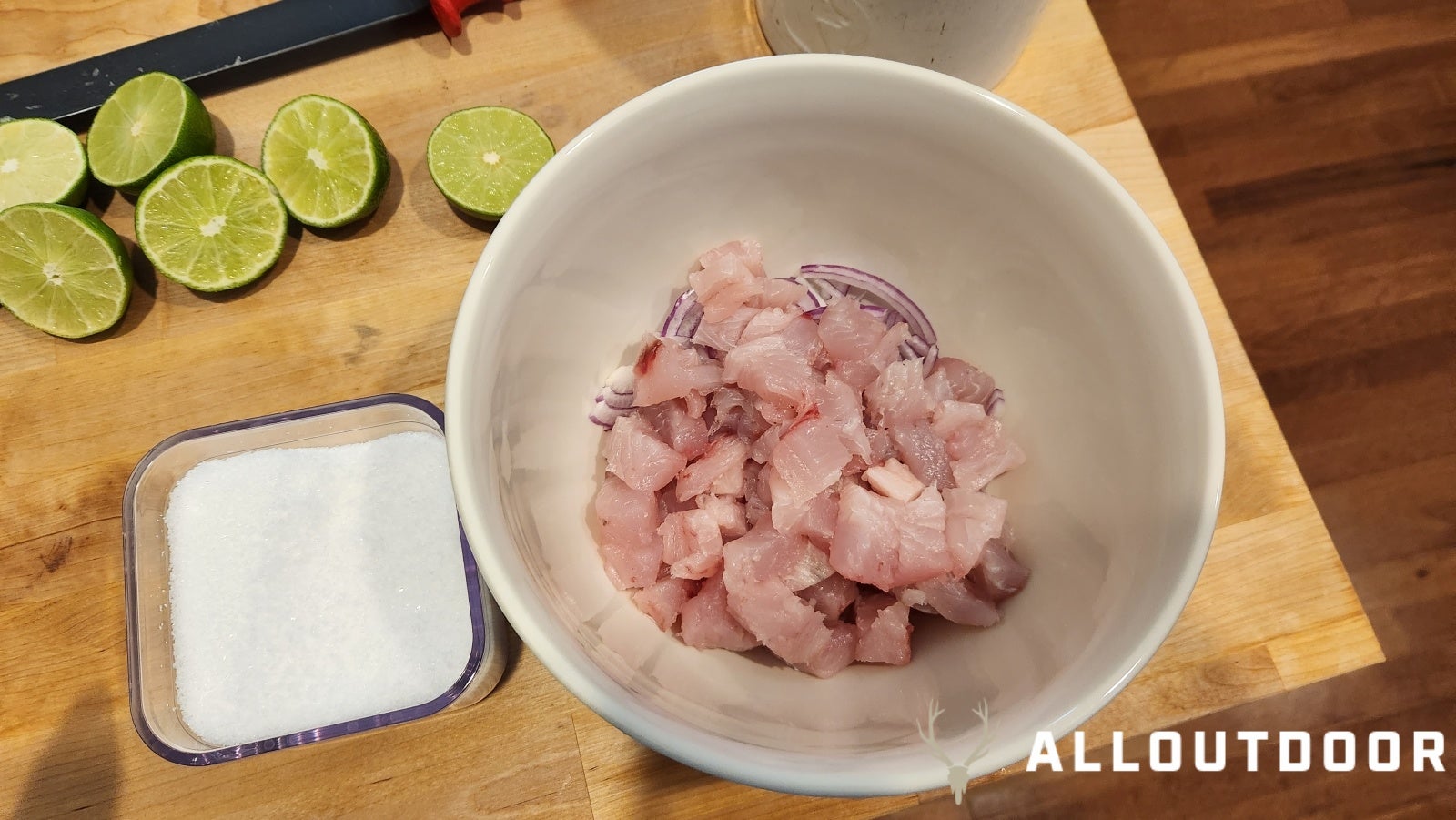
While the fish is “cooking” in the fridge, start prepping up the other vegetables. Dice up the tomatoes, cilantro, and serrano pepper. I remove the seeds out of the serrano but it’s up to you on how hot you want the ceviche.
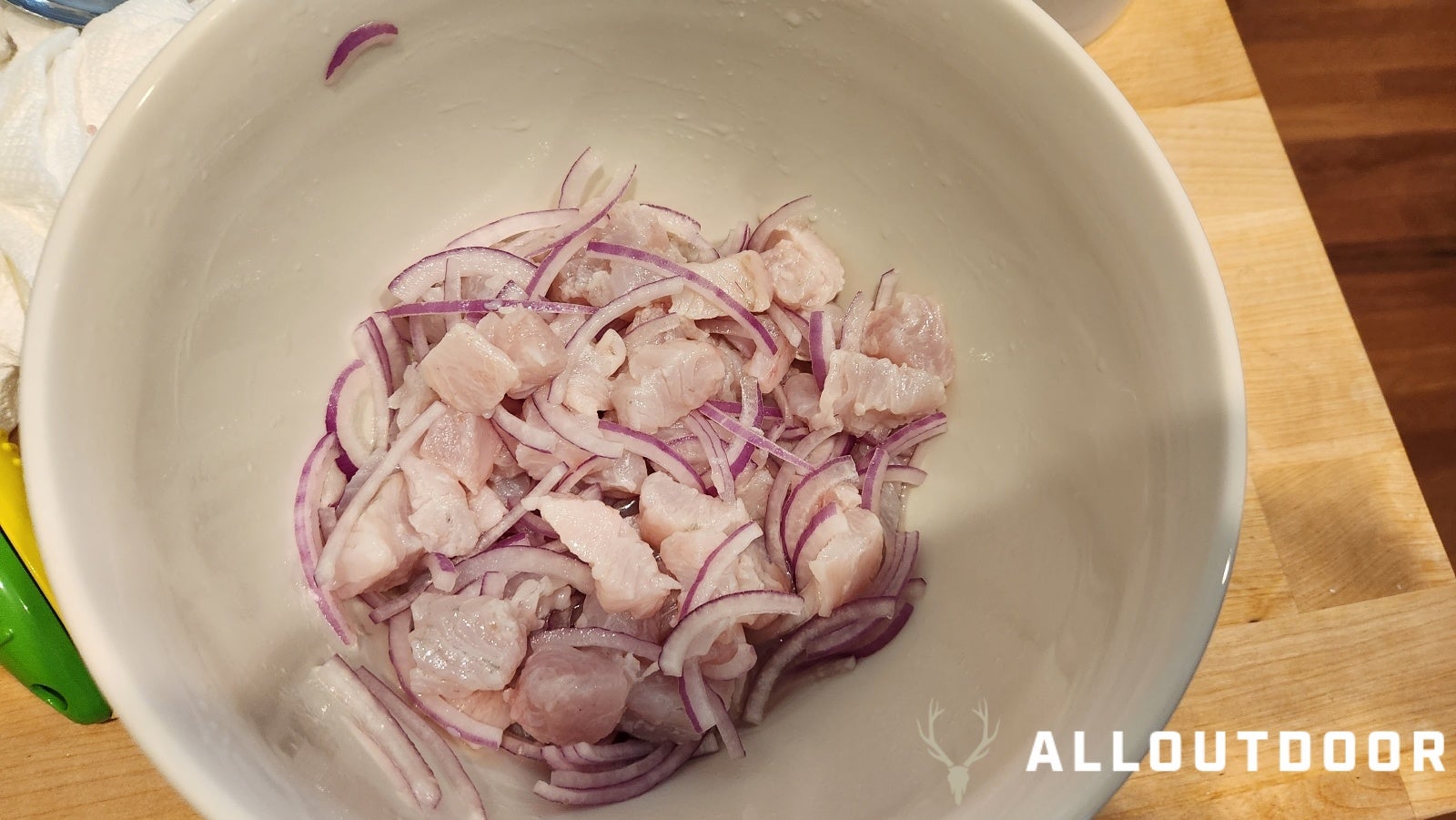
Now that the Spanish Mackerel cubes are done “cooking” add in all the veg you diced up and stir to combine. Then add salt and pepper to taste. The Spanish Mackerel ceviche is done.
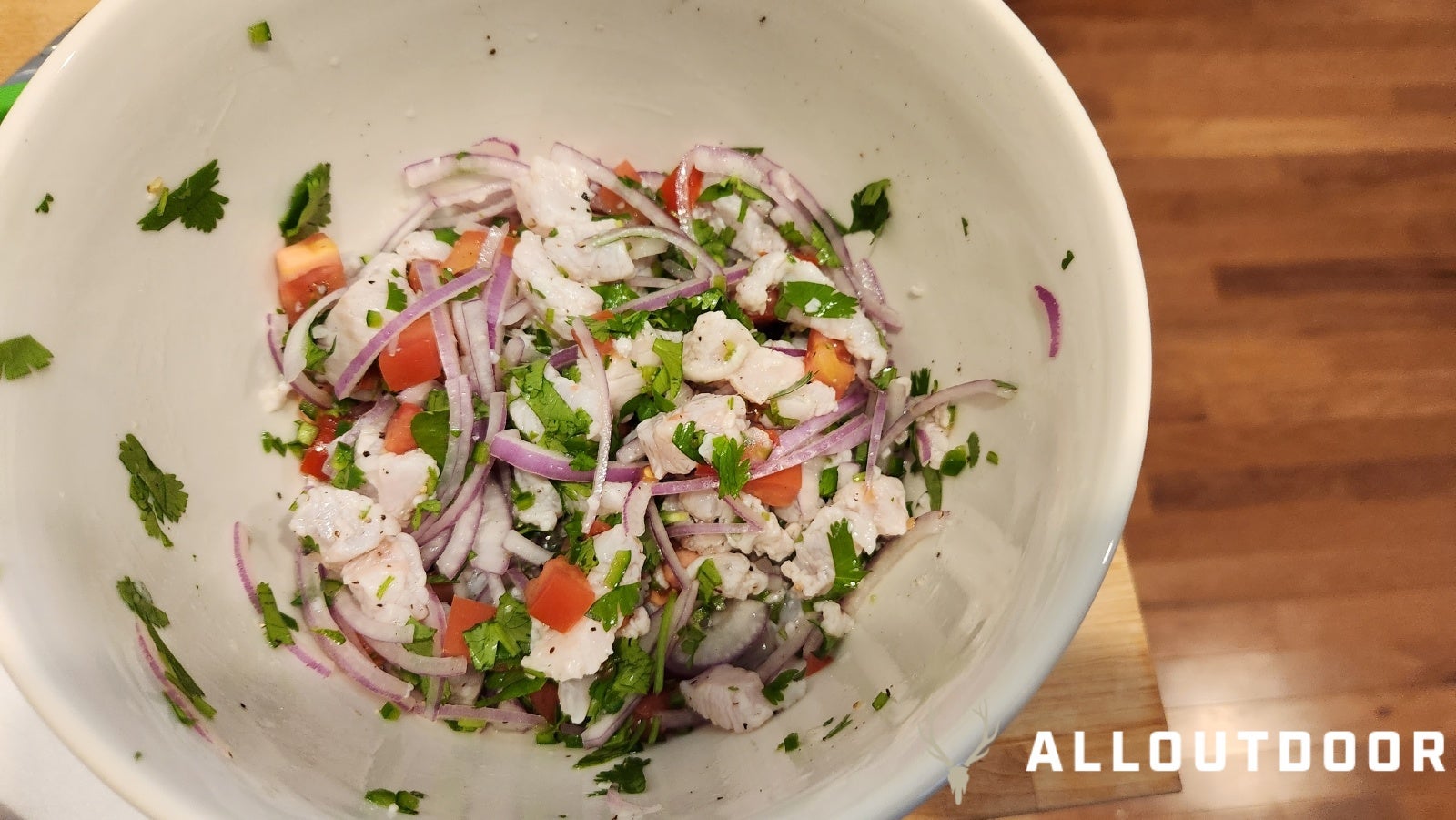
Serve the Spanish Mackerel ceviche with tostadas and with your favorite Mexican hot sauce.
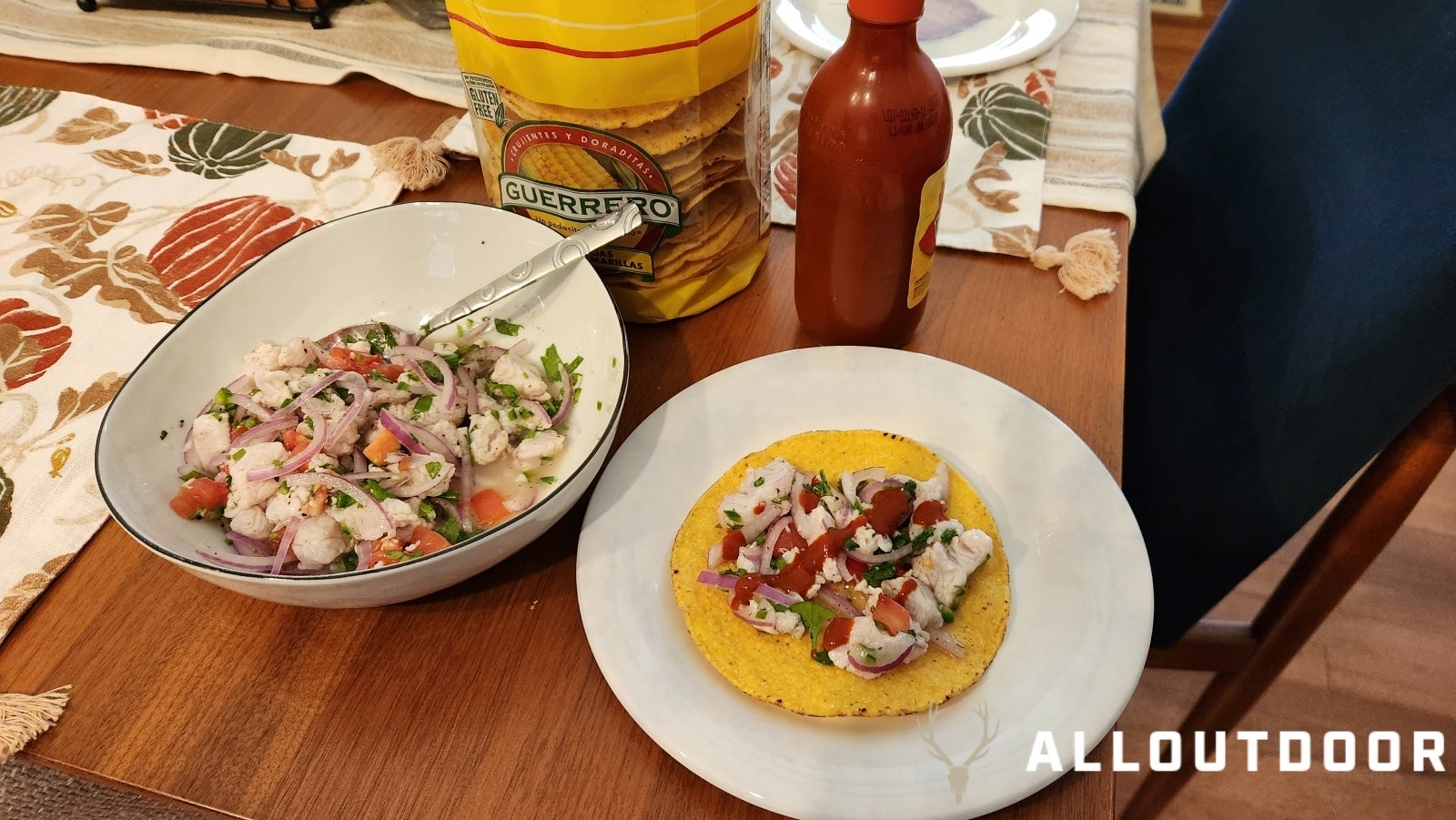
The post Cook your Catch – Delicious Spanish Mackerel Ceviche appeared first on AllOutdoor.com.
